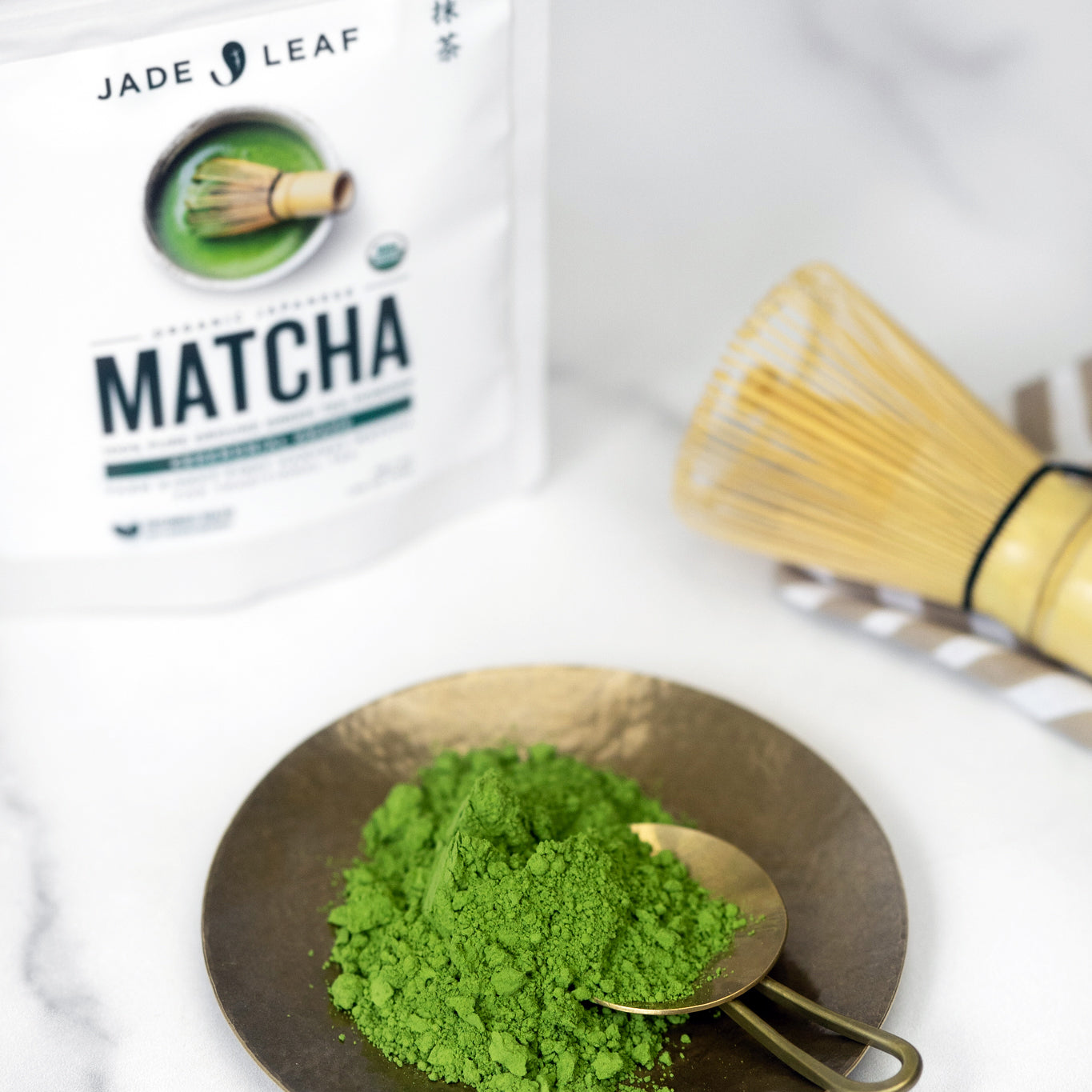This is why matcha is so amazing - discover the many matcha tea benefits
- Matcha naturally contains beneficial antioxidants.
- One antioxidant found in matcha, EGCG, has been shown to help support a healthy metabolism.
- The unique combination of Caffeine and L-theanine in matcha can provide a calm yet alert feeling. Unlike the jittery buzz of coffee, many report feeling a better sense of focus.
- Matcha also contains fiber, chlorophyll and vitamins.
Issa Mood! Caffeine + L-theanine = A Calming Energy Boost

What is caffeine?
Caffeine occurs naturally in the green tea plant (Camellia Sinensis) that acts as a defense mechanism to ward off insects, which protects the young tea leaves from being eaten. It is a natural stimulant that provides an energy boost and sense of alertness when consumed. Shaded green teas (like matcha) have higher concentrations of caffeine since it needs to produce more caffeine to defend itself from insects, which is why one serving of matcha (½ - 1 tsp) offers 10x the nutritional value of regularly brewed loose leaf or bagged green teas.
What is L-theanine?
L-theanine is an amino acid that is responsible for imparting a natural sweet and savory essence to teas, known as umami. It also buffers the negative effects of caffeine by inducing a feeling of relaxation by increasing alpha brain wave activity. This is what differentiates the caffeine content and energy boost one would experience with coffee versus matcha. The qualities of caffeine and L-theanine naturally found in matcha balance each other out, which contribute to elevated moods and provides a calm, yet alert energy boost that can last up to 6 hours without experiencing a “crash” or jittery feeling that one can anticipate after drinking coffee.
FUN FACT: Did you know that there are only three known naturally occurring sources of L-theanine found in nature? It is found in the green tea plant (Camellia Sinensis) that produces matcha and all teas, a mushroom called Boletus badius, and a plant called Guayusa.
Matcha contains antioxidants known as Polyphenols and EGCg
What are Polyphenols?
Polyphenols are micronutrients that we get through certain plant-based foods like matcha. They are considered antioxidants and have numerous health benefits that help fend off free radicals, the molecules that nutritionists believe are responsible for accelerated aging, tissue damage, and inflammatory issues.
You may have seen the word astringency pop up from time to time as you learn more about the health benefits of matcha. Polyphenols are responsible for astringency and bitterness in teas (like matcha) and wine, which is a taste experience that causes a dry sensation on the tongue.
Matcha is teeming with EGCg
Epigallocatechin Gallate (EGCg) is an antioxidant (more specifically a flavonoid/catechin) naturally occurring in matcha and green tea. What’s notable is that matcha has approximately 5x the amount of EGCgs than loose leaf green tea for one simple reason, you are consuming the whole leaf as opposed to brewing loose leaf tea and discarding the remnants.
Need to detox? Matcha can help with that.
Did you know that matcha is shade-grown for up to 30 days prior to harvesting? This is done by our farmers who utilize various shading techniques to cover the tea bushes, therefore limiting approximately 75% of sunlight from reaching the leaves. This reduces photosynthesis which results in a higher concentration of amino acids and high levels of chlorophyll which is known to be a powerful detoxifier of blood.
